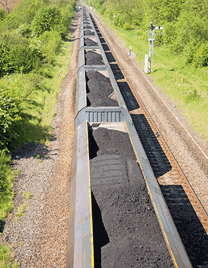 Read the peer review for this feature.
Read the peer review for this feature.
Download the graphs for this feature.
2016 beckons in a brave but rather chilly new world for rail freight. Coal, the backbone of the freight market since the very start of the Railway Era, has suffered a dramatic decline. Freight traffic moved by rail is down by 18%, the largest year-on-year fall since (ironically) the miner’s strike in 1984, when the problem was lack of production rather than lack of demand.
While doing their level best to accentuate the positive, the latest set of Office of Rail and Road statistics can’t escape the herd of elephants in the room, with coal leading the charge (down by 58%), followed by Channel Tunnel (down 32.5%), metals (down 15%) and petrochemicals (down 1%).
On the brighter, accentuate-the-positive side of things, the ORR points to “other” traffic (stuff that hasn’t been of sufficient interest to warrant disaggregation) increasing by 15%, construction rising by 1.6%, and domestic intermodal (the forecast source of most future growth) up by 0.4%.
While rail freight might temporarily be in the doldrums, there are always forecasts of jam tomorrow to fall back on. Trouble is, the history of the past 20 years reveals something of a discrepancy between forecast and actualité. Exhibit A shows the various forecasts made for and by the industry, against the comparative growth achieved by the industry itself over the same period (see Graph 1, page 37).
So either the forecasts are way off, the industry’s ability to deliver them is way off, or there is some other explanation. To be fair, the last set of forecasts produced for Network Rail in 2013 noted that these were “unconstrained” - not intellectually, but in terms of only showing the assumed latent potential of the railways to carry freight.
In the case of domestic intermodal, the approach has been to tot up every new rail freight interchange in the known universe, and to then suggest how many trains each one might produce according to the size of its warehousing, to arrive at an impressive forecast of potential new traffic. The actual evidence from the first generation of large rail freight interchanges (Daventry International Rail Freight Terminal, Hams Hall, etc) would tend to support the “build it and the trains will come” assumption.
If you then apply constraints, such as the (previously) ponderous planning process for delivering such interchanges, or the willingness of the end users to use rail, the ability of the operators to provide a competitive rail service, or the network to provide paths whenever they might be needed, the forecast will not be as high. That doesn’t need a degree in rocket science to understand, nor should it imply that imposing constraints will spell the end for rail freight as we know it.
As coal, steel and petrochemicals demonstrate, and the forecasts attempt to model, the economy does not stand still. The structure of industry and trade continues to change - sometimes cyclical (automotive manufacturing and railway passengers) and sometimes not (coal, thus far).
This is not to suggest that the entire rug has been pulled out from under the freight operating companies, just that there are now quite a few holes and bald patches that will need new material.
While we continue to build infrastructure, the construction sector will continue to use rail. And while we continue to make and/or consume general merchandise, there will be a market for moving them, a market that the rail freight industry has tended to lump together in the “other” category (assuming it’s either in a container or it’s not otherwise worth thinking about).
For the record, general merchandise (anything that doesn’t fit in the traditional bulk freight categories) amounts to nearly 700 million tonnes lifted by road haulage, or nearly half of all road haulage tonnage. Around a fifth of this tonnage moves more than 200 miles, bringing more than 130 million tonnes within rail’s target area of operation. Yet the forecasts assume that the current level of rail freight traffic (0.4 million tonnes, or 0.06% of the equivalent road market) will remain constant.
The assumption is that a good chunk of this ‘other’ stuff will find its way into a container and onto an intermodal service. Fair enough, and the continued (if shallowing) growth in intermodal rail freight over the past decade would endorse this. Yet the risk is that such a mindset closes off the possibility of unlocking any more of the general merchandise market (itself five times larger than the entire rail freight market) that can’t or won’t convert to containers. For example:
- Ports such as London Gateway, Liverpool Superport, Felixstowe SuperDuper Port and Teesport ÜberPort will all tell you that the future is port-centric - the shipping containers stay at the port and get de-stuffed in quayside warehousing, with the contents (rather than the containers) moved inland to customers. This view was endorsed recently in conversation with a leading road haulier, who acknowledged that given a choice between moving a container inland (which adds four tonnes of tare weight to the truck, so taking away four tonnes of revenue-earning payload) or moving the same goods inland in a standard truck or a conventional rail wagon, he wouldn’t need to phone a friend (or indeed a rocket scientist!) to work out which could be cheaper. His view is that rail-linked warehousing and conventional (or non-intermodal) rail services will become increasingly important, “despite people thinking it’s all a bit old-fashioned”.
- Ongoing separate discussions with (respectively) a major parcels carrier, a major supermarket and a major online retailer - all of which are looking for a much faster rail service than intermodal or standard conventional wagons (or indeed road haulage) could ever provide.
So there’s room in the market for more than the current rail freight portfolio of a) bulk; b) intermodal; c) not interested - not in any way to supplant a or b, but more to allow c to be unlocked.
Enter (stage left) the premium freight market. What do I mean by premium? I mean that sub-section of the general merchandise market where speed and reliability have as much of an influence as price in deciding which mode to use. At the global level, shippers will pay airlines such as BA an average of £900 per tonne to fly time-sensitive and/or perishable products around the world as the quickest option available, despite the enormous size of its carbon footprint. At the local level, a courier might charge £100 to make a same-day delivery within the UK for a package weighing less than one kilogram, the (theoretical) equivalent of £10,000 per tonne.
The explosion of online commerce has created a stampede to stay ahead of customer expectations. Once broadband speeds allowed us to order things more quickly online than going off to the shops, we stopped going to the shops as much. Once Next started offering ‘order tonight for delivery tomorrow’ we then expected all the other retailers to do likewise, which they promptly did (or at least tried to). Now Currys, Argos et al offer ‘click now and collect within the hour’, with some parts of the country now being offered same-day delivery for those prepared (impatient) enough to pay a premium for the privilege.
Behind the scenes, the continued rush towards same-day fulfilment creates enormous pressures on the supply chain. As neither the road network nor fleets of drones can move sufficient volumes at sufficient speeds to keep up with orders, so the retailers have no choice but to increase stockholding as close to the customers as possible, to make sure that when Mrs Miggins places her order, there’s enough held locally to fulfil the same-day promise.
Hold too little stock and you might lose Mrs Miggins’ custom to a rival. Hold too much and you’ll end up having to sell it off cheap or throw it away. Customers are sufficiently fickle not to care what impact their selfish, self-centred buying habits are having on logisticians. More by luck than intent, some of those hard-pressed logisticians are now starting to become aware of something they never knew they could have - a high-speed, low-carbon route to market, something that as train passengers we often take for granted.
When paired with suitable road delivery vehicles at one or both ends of the rail haul, the same seamless door-to-door service can be provided to customers as provided by existing road hauliers - the difference is the speed of transit over the primary ‘trunk’ haul, as well as the scope for significant reductions in emissions.
Into this definition of premium freight I’m also going to include TOC passenger luggage, as there’s little to distinguish the service requirements of a suitcase to those of an internet purchase - both need to arrive quickly and intact at the other end, and be capable of tracking throughout.
Anyone who has used the rail network at Christmas, Easter, summer or any Bank Holiday will be aware of the growing volume of luggage that has to find space on the train, to the point where at times it threatens to overwhelm the above-seat and end-of-coach racks, as well as any available space in power cars and DVTs (not available in IEPs).
The ability to intercept a passenger’s luggage before they even leave home (or worst case before they board the train) and route it in parallel to their destination may become increasingly important in the face of continued passenger growth. It may simply be good fortune that there hasn’t been a major incident where luggage has been a contributory factor, either in causing secondary injuries or hindering the evacuation of the train.
Lest we forget, freight secured us high-speed rail services in the first place, courtesy of trains such as the Irish Mail, which launched in 1848. Even today the Royal Mail has been quietly expanding its network of 100mph services back onto the East Coast Main Line alongside its core West Coast Main Line service.
However, to fully tap into and unlock the premium freight market, a headline 100mph top speed isn’t going to cut it when in practice that translates into a 40mph average, even if this still beats the 30mph that a classic freight train or an articulated lorry could achieve over the same medium to long-distance hauls.
Recent trials have proved that rail can deliver a high-speed service between city centres for both individual parcels as well as for trainload volumes. Five years of running with East Midlands Trains, as well as the recent pilot with Great Western Railway, demonstrates the ability for TOCs to support a high-speed (up to 125mph), high-frequency service for small-volume freight.
Thus it is now possible to move a parcel from the centre of Leicester to the centre of London at an average speed of 80mph, with multiple services each way per day. Try doing that by road (actually, don’t). Small wonder the service has attracted everything from documents to medical deliveries, saving lives as well as saving time.
At the trainload end of things DB Schenker continues to operate daily services for Royal Mail between London, Warrington, Glasgow and Newcastle. In parallel, Colas Rail has proven the ability of the freight operators to deliver trains into central London overnight, despite efforts to try and close down any such service establishing a foothold prior to Euston being rebuilt for HS2 (which, like HS1 did before it, continues to deny the possibility of freight running on it and paying money for the privilege).
In terms of pushing things up the speed curve, the impending arrival of the Hitachi IEP trains will put out to pasture a large number of HST sets, whose 125mph capabilities did as much to bring passengers back to the railway as we expect them to now do for an equally untapped section of the freight market.
A proven design, with high performance, dual power car traction contingency and still more life left in it, is an exciting prospect, much as how the alternative (‘razor blades’ or heritage use) isn’t!
In due course the first-generation Eurostars - along with Voyagers, Meridians and Adelantes - will similarly be kicking their heels as newer stock comes in. Airlines don’t send all their planes straight off to the scrapyard as soon as their frontline passenger days are over, when there’s scope to ‘repurpose’ them for a second career in the cargo sector. Granted there will undoubtedly be vehicle acceptance challenges and possibly even regulatory ones, too, but our discussions to date indicate a willingness from DfT across the railway industry to determine how it can work, rather than debate if it can work. The jigsaw is thus very slowly turning into a picture, having started with all the pieces around the edges that are easiest to find. Beyond finding customers, operators and rolling stock, the network of interchanges potentially extends across a large part of the existing station portfolio, alongside proposals for a major logistics hub in the Midlands offering purpose-built facilities for handling high-speed freight trains.
For those manufacturers, retailers and logistics companies who then choose to locate on site, a National Distribution Centre served by high-speed trains on Class 1 paths will be able to reach anywhere south of Glasgow within four hours (and even the Far North within eight hours), and be into central London within the hour - journey times that would be unheard of in an articulated lorry.
Having most of your stock located centrally would then reduce the need to hold further supplies at multiple regional and/or local distribution centres and stores, further enabling ‘lean’ logistics to be achieved. Higher transport costs are then offset by savings in distribution floor space and stock markdowns, a decision that in the 1990s prompted Nike to scrap a network of over 40 warehouses across Europe and replace it with a single European distribution centre.
The same opportunity presents itself now, in a way that only rail can realistically deliver. And for those muttering about “so what happens when the rail network goes down”, listen to the traffic news every day to see how well the road network performs these days!
To be clear, the premium freight market is not about to deliver ten million tonnes of new business to make good the loss of coal traffic. Nor does it require the freight operators to scrap all their rolling stock and push out brand new fleets of shiny new high-speed kit.
But with the aid of a dozen or so sets of converted first-generation high-speed passenger stock, along with suitably converted industry mindsets, the rail freight industry can tap into a more lucrative sector of the emerging online market.
In providing a service that no other form of surface transport can match, as the core of a new type of supply chain (‘internetists’ would call this ‘disruptive’, in a good way), so the loss of revenue from high-tonnage commodities such as coal will be replaced by smaller volumes of higher-yielding premium deliveries.
Policymakers will also latch onto the ability of such services to reduce the number and size of lorries needed to deliver goods (and emissions) into city centres. In parallel, TOCs can in turn benefit from accommodating small-volume shipments from which to extract further revenue from services (opening the door to mixed traffic services on peripheral/secondary routes), and be provided with a solution for handling customer luggage.
So there’s plenty of room in this new space for FOCs, TOCs, the railway supply chain and even intermediary service providers. It’s therefore pleasing to be able to conclude that we’re making progress on all fronts, with the expansion of the parcel-load services across a growing number of TOCs, while work continues with the rail industry to source suitable displaced traction and rolling stock and line up the necessary skills to convert them for a bright new future. You’re welcome to join us!
Read the peer reviews for this feature.
Download the graphs for this feature.
 Peer review: Lord Tony Berkeley
Peer review: Lord Tony Berkeley
Chairman, Rail Freight Group
Nick Gallop has unlocked a whole range of opportunities for freight by rail, ideas whose time has come because of changes in the demand for near instant delivery of goods. It is sad that coal and steel traffic by rail has so suddenly dropped through the floor, but perhaps these new opportunities will cause an industry-wide rethink of how these new business opportunities can be realised.
Nick is right that, along with these opportunities, there are problems. But then the industry must drop the ‘can’t do’ ways of so many in the ‘old’ railway, and adopt the can-do ways of the successful and ever-changing logistics industry - particularly those who are already delivering what the customer wants (today or sooner), and changing the means of doing this all the time.
However, ‘can’t do’ exists much more widely than in the rail sector. Some planning authorities are helpful, but others clearly see their ways of preventing change, even if this involves a small section of station platform and loading point to a road vehicle for the last mile or so. Easier to reject a greener and safer form of traffic, if that might mean that passengers might have to stand at a different part of a platform at certain times of day outside the rush hour.
How quickly can one unload a roll cage or equivalent off a train? Probably as quickly as many passengers get on and off, if the freight work is properly organised.
What about the road, perhaps electric or bike transport at either or both ends? This remains part of the logistics chain, and should be no more difficult to organise efficiently than truck/swap body/truck? It will need small depots in town or city centres - a problem due to high land values as well as planning, but soluble.
One of the most difficult parts of the chain will be the town or city centre transfer points. Some stations are so congested that the operator may fear the ORR taking them to task for allowing congestion - some lifts may need to be used for freight as well as passengers, but does this matter? Clearly it does for those who are mobility impaired, but others would have the option of sending their cases separately, as Nick suggests.
The new Hitachi IEPs could have fold-up (though comfortable) seats built in from the start, and there are plenty of older passenger trains, both diesel and electric, which could carry this higher value freight traffic when demand exceeds available space on passenger trains.
And when will rail catch up with the developments for road trains, trucks hooked together for the long haul and easily separable for the last mile or so? Rail should be leading here!
What is needed is to build on the encouragement given by our Rail Minister Claire Perry, and turn this into action. Positive policies from the DfT, and instructions to Network Rail and passenger operators to take freight seriously and integrate it with their passenger operations. Or encourage new operators, perhaps rail freight FOCs, to join in or operate open access passenger trains with freight capacity.
We must also recognise that it will all need more management time than the conventional railway. But given the high value of much of the cargo, growing road congestion and a can-do attitude, this might in a few years give the rail freight, parcels and small loads industry the kick-start to provide so many benefits to the community and profits to operators and others, as well as reducing congestion, air pollution et al in our cities.
 Peer review: Chris MacRae
Peer review: Chris MacRae
Manager – Rail Freight Policy, Freight Transport Association
Nick’s article outlines interesting opportunities for rail freight in high-value, time-sensitive freight markets. However, for rail to compete in this high-value and time-critical FMCG (fast-moving consumer goods) market, a number of key challenges need to be overcome by the rail industry collectively. While these apply to the FMCG market, they also apply to other existing freight markets in respect of retaining and increasing traffic.
In 2012 the Freight Transport Association published On Track - a series of case studies provided by retailers to demonstrate their commitment to reducing the environmental impact of their transport operations through greater use of rail. The same retailers subsequently identified seven targets for the rail freight industry in order to expand their use of rail significantly. These targets were endorsed by FTA’s Rail Freight Council, and by FTA’s British Shippers’ Council, which includes a wider range of shippers engaged in other sectors of the economy.
To achieve Network Rail’s rail freight growth forecasts, rail freight will need to increase by 6% per year. The Agenda for More Rail Freight sets out the following targets:
Cost reduction by 15% based on current costs plus innovation: The McNulty report into the efficiency of Britain’s railways estimated that Britain’s railways were between 20%-30% less cost-efficient than their continental counterparts. Increasing train velocity from 25mph to 35mph and creating a stable charging regime is needed to reduce rail freight’s cost base.
Six-hour response time to service and alteration requests: Shippers have identified a six-hour response time to be the industry target, but recognises that different response times may be appropriate for different kinds of supply chain. Enquiries regarding incremental traffic on existing services should be responded to immediately. Delivery of a Digital Railway vision will facilitate planning and scheduling, leading to enhanced response times.
Seven-Day Railway Capability: Shippers require a seven-day rail freight capability if they are to use rail, to avoid having to retain a road fleet capability themselves if a route is closed (due to maintenance, for example). Therefore the service offering to them needs to be a one-stop-shop by the service provider inclusive of any rail replacement road freight operation requirements.
Standard train lengths should be increased by 17.5%: Shippers have identified that train lengths need to be increased to 775 metres as the industry planning standard, with heavier trains and higher axle weights for bulk traffic to reduce unit costs, achieve economies of scale, and reduce the cost of rail freight.
400% increase in terminal capacity: Increased capacity in strategic rail freight interchanges and rail-connected warehousing is crucial to expanding access to the rail freight network, and to achieving Network Rail’s Freight Market Study forecasts of 5.9m2 terminal capacity.
Reduce intermodal transfer costs by £50: Transfer costs are dependent on terminal size, throughput and handling equipment. Enhanced efficiency in inbound and outbound road operations and optimisation of fleets and drivers is needed to reduce costs.
Reduce Channel Tunnel rail freight charges and rates by £50: Track access charges have historically been set at a level which has dissuaded serious take-up in international rail freight services. Recent reductions in track access charges by Eurotunnel in response to EU legal proceedings have resulted in reduced charges. These reductions need to be made permanent. Further cost reductions can be achieved by making costs and management more visible, by collaboration between service providers on operations and equipment, and by non-discrimination between freight shuttles and through freight trains.
 Peer review: Jeff Screeton
Peer review: Jeff Screeton
Managing Director, Intercity Railfreight Ltd
Nick’s article highlights the growing need for innovation in the UK rail freight sector. Times and the market place they are a’ changin’, but I suspect far too many people still can’t (or won’t) see the bigger picture.
The headline is simple: the UK competes in a global economy, and there is always going to be somebody, somewhere, who is looking to do things better, faster and cheaper than we can. We might occupy a number of niches, but for how much longer?
With this in mind we need to be asking why we continue to tolerate so much supply chain waste (and by default cost and, ultimately, lost opportunities). And that’s before we start on the associated challenges and costs of traffic congestion and air pollution - the latter reportedly responsible for some 40,000 deaths annually.
Nick mentions the successful integration of passenger trains into the supply chains of a wide range of time/cost-sensitive commodities, but other benefits need to be considered. The East Midlands experience quickly highlighted that rail can easily be dovetailed into zero-carbon first/last mile transport operations. It is relatively simple to plan urban transport around a rail timetable with stations as cross-dock facilities, which means that small/frequent consignments are not just compatible with cycle logistics but also enable much more effective planning and use of electric vehicles.
The converted HSTs that Nick advocates using for freight plug equally well into the latter scenario coupled to a shared user philosophy and ‘white fleet’ zero-carbon first and last mile transport, which could mean a quick and dramatic reduction in the carbon footprint of retail and e-tail operations coupled to cost reduction and other benefits such as increased responsiveness in an environment moving rapidly towards instant fulfilment.
The recent GWR operation is slowly proving that using marginal freight capacity on passenger trains can make a big difference to local economies. Cornwall’s seafood industry, for example, has been in decline for some years as quotas have bitten, but the need to increase the value of the catch is unlikely to be realised on the back of road transport. Add rail’s speed and the ability for affluent markets such as London to order in the morning and receive fresh the same afternoon, along with an infinitely higher sustainability dimension, and very quickly the ball game changes with profitability fed back down the chain to where it is often so badly needed.
There are no hubs (which underwriters see increasingly as high risk) with the passenger operation, which means an ability to offer full consignment insurance that road cannot (or will not) do. For very high value items such as artwork, ceramics, live shellfish and freshly cut flowers this makes the rail service a game changer for producers used to losses in transit.
Internet-based control systems make a huge difference in the control of rail operations, and enable the sort of dynamic decision-making and contingency planning that was once the sole preserve of road transport. This has proved a deciding factor in the successful bid to attract highly time-sensitive commodities to rail such as clinical trials, fertility samples and human tissue.
The next step is to broaden the debate and start asking why we should not be making better use of existing resources and capacity to move freight quickly, cost effectively and sustainably. Nick refers to the practice adopted by airlines of converting aircraft for freight, but they also have flexible space arrangements whereby seats are removed to create freight space and replaced when required. It is gratifying that one UK company has developed a practical scheme to do just that on passenger trains, albeit with seats that fold up at the push of a button to create space at off-peak times and enable the trains to function as dual-mode passenger/freight vehicles or even pure freight - preferable to being parked up in a siding most of the day while HGVs and diesel vans slug up and down the motorways and create congestion and pollution in town and city centres.
The six million dollar question, though, is whether this technology is being (or will be) considered for the new rolling stock that will soon appear on key routes, or, true to form, will the UK leave it until it’s too late and somebody else has taken the prize from under our noses? It certainly wouldn’t be the first time.
 Peer review: Martin Fleetwood
Peer review: Martin Fleetwood
Partner in the Transport and Infrastructure Group at law firm Shoosmiths LLP and an Independent Board Member of UK Tram
The growth of online commerce and the requirement for rapid delivery times is a phenomenon of the 21st century. The growth of collection points at a number of railway stations is testament to this, allowing customers to pick up their lunchtime internet purchase on the way home from work.
Nick’s article makes interesting reading on the premiums that people and organisations are prepared to pay for high-speed freight, and the opportunities that our rail network provides to rise to these challenges. We have a network capable of moving people at high speeds, so why not premium fast delivery lightweight freight? Being able to take the benefit of an unused path that classic freight is too slow to take would be a good use of spare infrastructure capacity.
While a converted HST set may be able to whisk a train load of freight at high speed interleaved with a number of passenger services, the most popular routes for freight are likely to be those that are also the most well used by passenger services. The issues of pinch points and capacity constraints are likely to occur, so thought must be given as to whom would get priority for a path? This may tax the ORR somewhat as it considers its duty under Section 4 of the Railways Act 1993. The economic benefits deriving for a time-critical express freight train delivering goods for collection in time for the evening peak flow at (say) London Euston is somewhat different from an aggregates delivery. There is also a potential argument over the payment of variable track access charges.
The location of a major rail transshipment centre in the Midlands would link well into the current practice of a number of major retailers who locate their main warehouses in the area for road-based transport. Trains waiting to be loaded up with goods heading off to various locations sounds an exciting prospect.
However, having a workable stopping pattern to serve city centres along the relevant routes without affecting passenger services also needs to be considered. The old goods sidings have long ago become apartments for commuters or car parks, so new goods handling facilities will be needed at stations. How quickly the relevant cages can be unloaded will be a significant factor in how easily a service would fit between passenger diagrams. A new breed of station access agreements for express freight operators may be required, to ensure facilities are available for rapid unloading (and some loading), storage and distribution.
The East Midlands Trains trial shows it can be done. The next step will be to scale up operations, looking both at the number of items carried and the storage/distribution of items from the relevant stations. To this end it would be interesting to determining the appetite for converting either half or a whole carriage in (say) an HST unit or even a Pendolino to convey freight - effectively the re-emergence of the brake van. I applaud Nick and his colleagues for the work they have already done in this area and hope that the rail industry will embrace the opportunities that high-speed freight can offer.


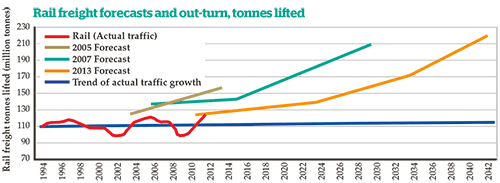
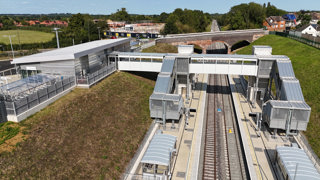
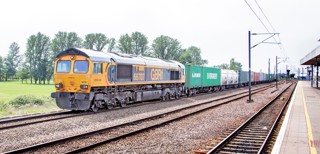

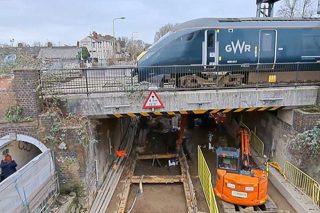
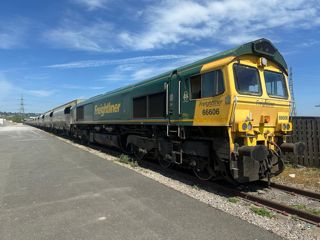




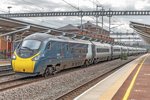







Login to comment
Comments
No comments have been made yet.